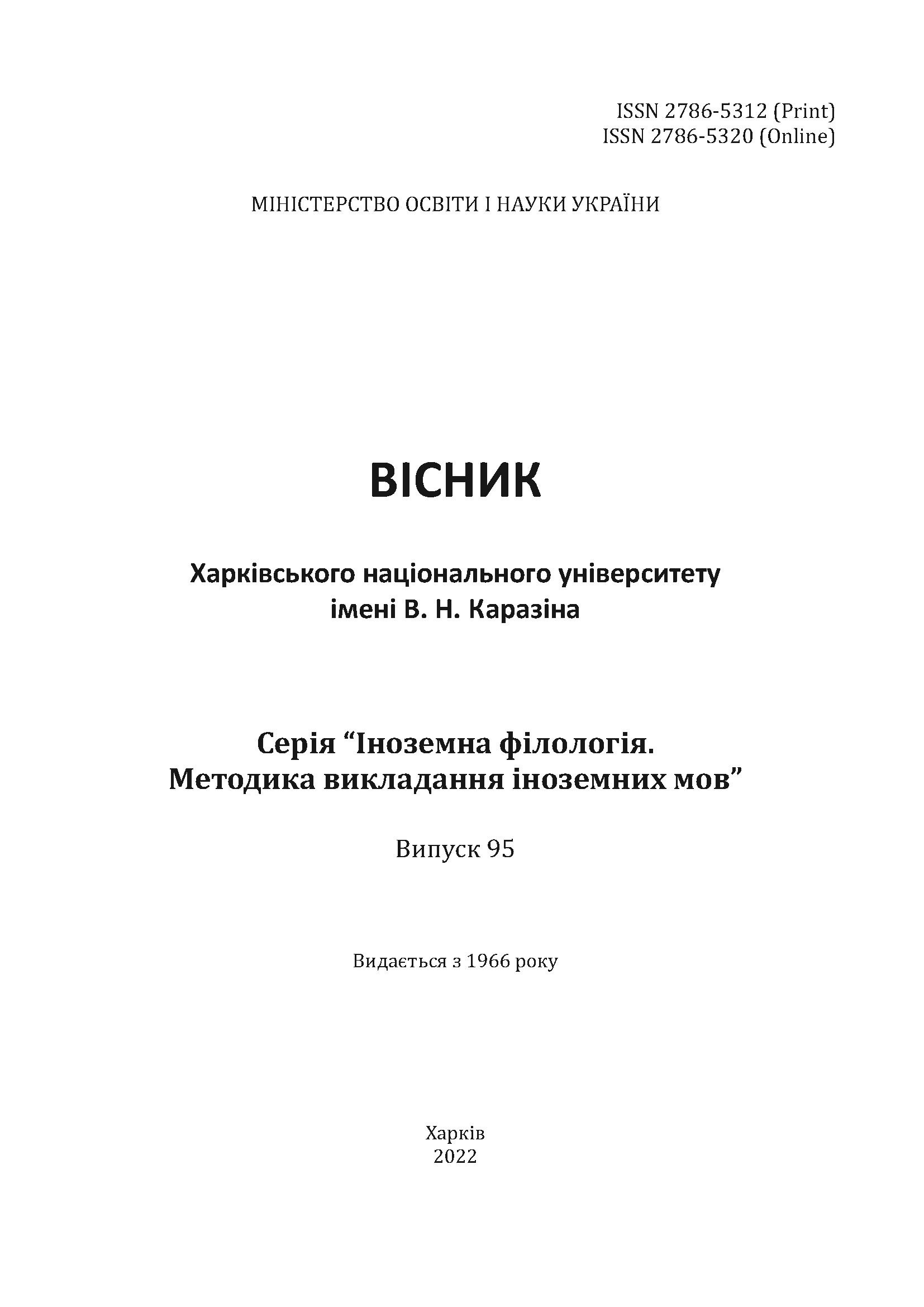Методичні аспекти викладання китайської мови у сфері юриспруденції
Анотація
У статті розглядаються методичні аспекти викладання китайської мови у сфері юриспруденції. Через процеси глобалізації та інтеграції, зростає попит на вивчення нових мов, особливу зацікавленість останнім часом складає китайська мова. У майбутніх спеціалістів спостерігається високий інтерес до засвоєння більш широкого спектру тематик. Актуальність нашого дослідження полягає в тому, що студенти-перекладачі ставлять в пріоритет розширення знань у сфері юриспруденції. Метою даного дослідження є забезпечення інтенсивного оволодіння знаннями та отримання нових навичок перекладу у вузькому аспекті. Об’єктом нашого дослідження виступають методичні аспекти викладання китайської мови, а предметом – професійно-орієнтовані методи та засоби викладання китайської мови. Результатами дослідження є узагальнення основних положень щодо методичних аспектів викладання. Завдяки правильному підбору матеріалів, майбутнім перекладачам надавали змогу не тільки вивчати основну та повсякденну лексику, але також пізнавати та опрацьовувати лексику на тему юриспруденції. Після опитування серед студентів, нами було виявлено самі вразливі місця при перекладі на дану тематику. Такими місцями виступають, наприклад, погане уявлення щодо контексту вживання нової лексики, проблема з браком досвіду в роботі з реальною документацію і т.п. Тому наш підхід був направлений на роботу для максимального усунення всіх вказаних проблем при перекладі. Викладач має приділяти серйозну увагу розробці методичних аспектів викладання та коректному укладанню методичних посібників, щоб студенти мали змогу ефективніше засвоїти, відпрацювати та використовувати наданий матеріал. Саме заняття з практики перекладу мають допомогти студенту не тільки підвищити професійний рівень, але й відточити свої навички в умовах, близьких до майбутньої діяльності.
Завантаження
Посилання
Biekriesheva, L. O. (2006). Teoriia i praktyka perekladu. Konspekt lektsij [Theory and practice of translation: Notes on lectures]. Luhans’k: SNU imeni V. Dalia. (in Ukrainian)
Bojko, I. V. (2021). Osoblyvosti perekladu iurydychnykh dokumentiv ta ikh oformlennia [Translating law documents and their layout]. Aktual’ni problemy filolohii ta perekladoznavstva [Topical issues of philology and translation studies], 21(2). Retrieved from http://elar.khmnu.edu.ua/jspui/bitstream/123456789/10537/1/%D0%91%D0%9E%D0%99%D0%9A%D0%9E.pdf. (in Ukrainian)
Chernovatyj, L. M., Karaban, V. I., Ivanko, Yu. P., & Lypko, I. P. (2006). Pereklad anhlomovnoi iurydychnoi literatury [Translating English law literature]. Vinnytsia: Nova knyha. (in Ukrainian)
Hobova, Ye. V. (2019). Problemy peredachi kytajs’kykh sliv zasobamy ukrains’koi movy [Issues with translating Chinese words into Ukrainian]. Kyiv: Instytut skhodoznavstva imeni A. Yu. Kryms’koho NAN Ukrainy. (in Ukrainian)
Kabanova, M. R., & Tarnopol’s’kyy̆, O. B. (2019). Metodyka vykladannia inozemnykh mov ta ïkh aspektiv u vyschiy̆ shkoli [Methodology of teaching foreign languages and their aspects in universitites]. Dnipro: Universytet imeni Al’freda Nobelia. (In Ukrainian)
Kosheleva, I. V., & Gan, Ma. (2017). Terminy i ponjatija logistiki i mezhdunarodnoj torgovli. Kitajsko- russkie sootvetstvija i praktika perevoda [Terms and notions of logistics and international trade. Chinese-Russian counterparts and practice of translation]. Har’kov: HNU imeni V. N. Karazina.
Kyiak, T. R. (2008). Perekladoznavstvo (nimets’ko-ukrains’kyj napriam) [Translation studies (German and Ukrainian)]. Kyiv: VPTs «Kyivs’kyj universytet». (in Ukrainian)
Lazarchuk, M. O. (2013). Sotsial’no-ekonomichni reformy v Kytai: Henezys ta chynnyky [Social and economic reforms in China: Genesis and factors]. Visnyk MSU, ekonomichni nauky [MSU Messenger, economics], 16, 117–124. (in Ukrainian)
Pravyla vykonannia pys’movykh perekladiv [Rules of doing written translations]. Retrieved from http://perevedi.info/upload/iblock/88f/88fc1d02228d1d479c2dabd538344a41.pdf. (in Ukrainian)
Scho take usnyj pereklad, riznytsia mizh poslidovnym i synkhronnym perekladom [What is oral translation, the difference between consecutive and simultaneous translation]. Retrieved from https://translate.jurklee.ua/uk/vidy-ustnogo-perevoda/. (in Ukrainian)
Semenova, T. M. (2012). Ohliad doslidzhen’ v oblasti metodyky vykladannia kytajs’koi movy [Outlook of research in the field of the methodology of teaching Chinese]. Molodyj vchenyj [Young scientist], 12, 510–512. (in Ukrainian)
Vyznachennia Konstytutsijnoho prava Ukrainy [Defining the constitutional law of Ukraine]. Retrieved from https://uk.wikipedia. org/wiki/Конституційне_право_України. (in Ukrainian)
中华人民共和国宪法 - 定义. Retrieved from https://zh.wikipedia.org/wiki/中华人民共和国宪法. (in Chinese)
李晓琪主编,催华山编著. (2009). 新丝路中级速成商务汉语ІІ. 北京: 北京大学出版社 (in Chinese)
李晓琪主编,李海燕编著. (2009). 新丝路高级级速成商务汉语 І. 北京: 北京大学出版社 (in Chinese)
洪天豪. (2014). 浅谈我国历史文化与法律进化史, 396, 76–77页). 法制与经济·学术争鸣. (in Chinese)
都市晚高峰. (2019). 王毅介绍中国外交政策和对外关系. Retrieved from https://v.youku.com/v_show/id_XNDA5MDM5NzgxMg==.html?spm=a2h0c.8166622.PhoneSokuUgc_46.dscreenshot. (in Chinese)




